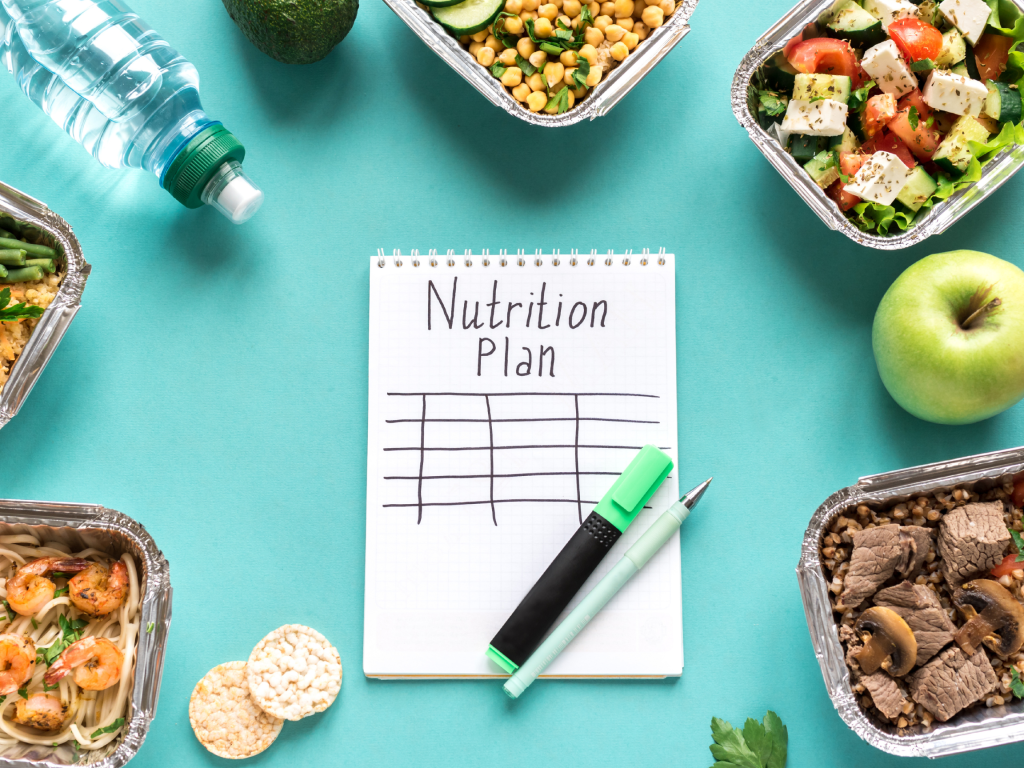Table of Contents
Ah, the tween years! A time of epic growth spurts and the mysterious, bottomless stomachs that come with them. It’s a period when your not-so-little ones suddenly start to eat you out of house and home. But as their bodies grow faster than a weed in the spring, it’s crucial to channel their voracious appetites into nutritional goldmines that support their development and keep their hydration levels in tip-top shape.
Just like crafting the perfect Halloween costume takes care, creativity, and a little bit of magic, so does nurturing a tween’s diet. The right balance of nutrients not only powers those growth spurts but also lays the groundwork for a lifetime of healthy habits. And when it comes to hydration, it’s about more than just quenching thirst—it’s about fueling an adventure.
So, let’s dive into the art and science of feeding these young explorers. With a sprinkle of wisdom and a dash of fun, we’ll uncover the secrets to keeping your tween’s energy up, their bodies nourished, and their spirits soaring high—no capes or wands required!
Navigating Growth: Understanding Tweens’ Appetites
As tweens hit their growth spurts, it’s not just their height that’s on the rise – their appetite seems to skyrocket too. This isn’t just about an increase in meal sizes or more frequent snacking; it’s a sign that their bodies are undergoing significant changes and require additional energy and nutrients to support this rapid development.
It’s essential to recognize this natural uptick in hunger for what it is: a call from their bodies for more of the good stuff – proteins for muscles, calcium for bones, and all the vitamins and minerals to keep everything running smoothly.
Grasping the ‘why’ behind the ‘more’ is the first step in managing tween nutrition smartly. With this understanding, we can provide meals that are as nutritious as they are satisfying – ensuring that when hunger strikes, it’s met with the kind of food that fuels growth in the best possible way.
And with this newfound knowledge, we’re perfectly poised to tackle the next topic: laying the foundation of a balanced diet that keeps those energy levels high and supports our tweens through every inch they grow.
Smart Snacking: Healthy Options for Growing Tweens
Snacking is an art, especially when it comes to tweens who are constantly on the move and growing. It’s not just about filling gaps between meals; it’s about choosing snacks that are as nutritious as they are satisfying. The goal is to offer options that contribute to their daily nutritional needs while being convenient and appealing.
Protein-rich snacks like yogurt or a handful of nuts provide lasting energy. Fruits and vegetables can be made fun with dips or by cutting them into interesting shapes. Whole grains in the form of oat bars or popcorn offer fiber and keep those growing bodies satiated until dinner time.
It’s all about providing snacks that support their growth and keep their taste buds curious. Pairing these with the right hydration, primarily water, ensures that tweens are well-nourished and hydrated, ready to tackle their day with vigor.
With our snack game strong, we now turn to the importance of hydration, the often unsung hero of a tween’s diet, ready to elevate their health and daily performance.
Hydration: Essential for Tween Health and Energy
As vital as the food on their plates, hydration plays a crucial role in a tween’s health and energy levels. Water is the primary component of the human body, and it’s especially important for active, growing tweens. It’s not just about quenching thirst; adequate hydration helps maintain concentration, supports physical performance, and is essential for every cellular function.
Encouraging tweens to drink water regularly can be a challenge, but it’s a habit that will serve them well. From carrying a fun, reusable water bottle to flavoring water with fruits, there are many strategies to make hydration appealing.
Understanding the balance of electrolytes and the importance of water during physical activities is also key. This will not only help in maintaining energy but also in preventing dehydration, which can be a real concern during intense play or sports.
With our foundation of smart snacking and hydration set, we are well-equipped to look at how we can teach tweens about portion sizes and the importance of listening to their hunger and fullness signals in the next section.

Portion Education: Helping Tweens Navigate Hunger and Fullness
As tweens grow, they often face the challenge of understanding and managing their portion sizes. This is a critical skill, as it helps prevent overeating and encourages a healthy relationship with food. It’s about teaching them to recognize their body’s signals for hunger and fullness, and understanding that portion size can be flexible, tailored to their activity level and growth needs.
Educating tweens on what a balanced plate looks like — half filled with fruits and vegetables, a quarter with lean proteins, and a quarter with whole grains — can serve as a visual guide for self-regulating portions. Regular family meals can reinforce these concepts, as they see portion sizes in action.
Now, as we’ve equipped our tweens with the knowledge of ‘how much’, we’ll next explore the ‘what’ — specifically, how to reduce the allure of junk food and promote healthier alternatives.
Reducing Junk Food Temptation: Strategies for Healthy Choices
Navigating the minefield of junk food temptations is a significant part of managing tween nutrition. It’s not about imposing a ban, but rather teaching tweens to make smarter food choices. By keeping a variety of healthy, appealing alternatives available—like fruit smoothies, nuts, or homemade granola bars—parents can gently steer tweens away from less nutritious options.
It’s also about making the healthy choice the easy choice. Organizing the pantry so that wholesome snacks are at eye level and ready to grab can make all the difference. And involving tweens in the decision-making process gives them a sense of control and investment in their health choices.
With these strategies in place, we prepare to take the next step: inviting tweens into the kitchen for a hands-on experience in meal planning and preparation.
Involvement in Meal Planning and Preparation: A Recipe for Success
Bringing tweens into the kitchen to help with meal planning and preparation isn’t just about teaching them to cook; it’s about empowering them with knowledge and skills for a lifetime of healthy eating. From selecting recipes to chopping veggies, each step is an opportunity for learning and engagement.
This hands-on approach demystifies ingredients and transforms them into delicious meals, making the process of eating well both educational and fun. By understanding the effort that goes into cooking, tweens are more likely to appreciate their meals and make thoughtful choices about what they eat.
As tweens become more comfortable in the kitchen, we can seamlessly transition to the importance of establishing regular meal times—a key component in a healthy eating routine.
Establishing Regular Meal Times: A Pillar of Tween Nutrition
Creating a routine with regular meal times lays the foundation for consistent eating habits and can help regulate hunger throughout the day. For tweens, a structured mealtime is not just about when they eat, but also how they eat. It encourages them to slow down, savor their food, and pay attention to their hunger and fullness cues.
Consistent meal times also provide a sense of security and routine, which can be particularly comforting during the chaotic tween years. They foster family bonding and ensure that busy schedules don’t disrupt the nutritional balance.
With a routine in place, we’ll next delve into the dynamic duo of nutrition and physical activity, and how they play off each other to keep tweens at their best.

The Synergy of Nutrition and Physical Activity: Fueling Tween Vitality
The interplay between nutrition and physical activity is where tween wellness really shines. A diet rich in essential nutrients does more than support growth; it fuels the physical activity that is so important at this stage of life. This is about more than just calories in and calories out; it’s about quality fuel that powers their play, sports, and daily activities.
Teaching tweens the value of eating well for their physical endeavors helps them understand the practical impact of nutrition on their energy levels and performance. And with this understanding, they can make empowered choices that support a healthy, active lifestyle.
As we close this section, we have equipped tweens with the tools they need for nutritional success, ready to explore additional considerations that round out their wellness journey.
Additional Considerations: Enriching Tween Wellness
In nurturing tween wellness, it’s crucial to address the full spectrum of health. This includes acknowledging unique dietary needs—whether due to allergies, ethical choices, or health conditions. Equally important is the cultivation of a positive body image and relationship with food, steering clear of negative language and fostering confidence.
Supplementation may be appropriate in certain cases, but always under a healthcare provider’s guidance. Don’t forget the significant role of sleep in cognitive function and appetite control. Providing tweens with resources to learn about nutrition empowers them to take charge of their well-being as they grow.
By embracing these facets, we ensure a holistic approach to tween health, paving the way for a future of informed and healthy choices.
As our culinary crusade concludes, I’d like to leave you with a treasure chest of resources to further support your quest for tween nutrition knowledge. Books, websites, and local workshops can offer deeper dives into specific areas, whether it’s recipes, understanding nutrients, or tips for fussy eaters. Check out your local library, seek out registered dietitians, and find reputable online platforms dedicated to family health. Each resource is another ingredient in your pouch for success, ready to help you and your tween on this journey to wellness.
- Dining Decisions App
- The Dietary Guideline for Americans, 2025 Edition
- A comprehensive resource by the National Institutes of Health, offering valuable insights into health and nutrition as tweens grow older
- MyPlate for Teens
- Nutrition Facts, how to read a label
- Nutrition tips to help teen athletes fuel before, during, and after workouts to optimize performance
And with that, we’ve charted a course through the vibrant landscape of tween nutrition and hydration! From mastering the art of smart snacking to harnessing the power of hydration, we’ve equipped our tweens with the tools they need to thrive during these crucial growth years.
The path to healthy habits is a continuous adventure, filled with learning and shared experiences. The dragons of junk food and sporadic eating stand no chance against our collective wisdom and the robust armor of a balanced diet.
So, I extend an invitation to you, the valiant guardians of tween wellness, to join in the dialogue. What are your tried-and-true tactics for serving up tween-friendly, nutritious meals? How do you inspire your young ones to stay hydrated? Contribute your insights and stories in the comments. Together, let’s keep forging ahead, nurturing the health and joy of our growing heroes every step of the way!

